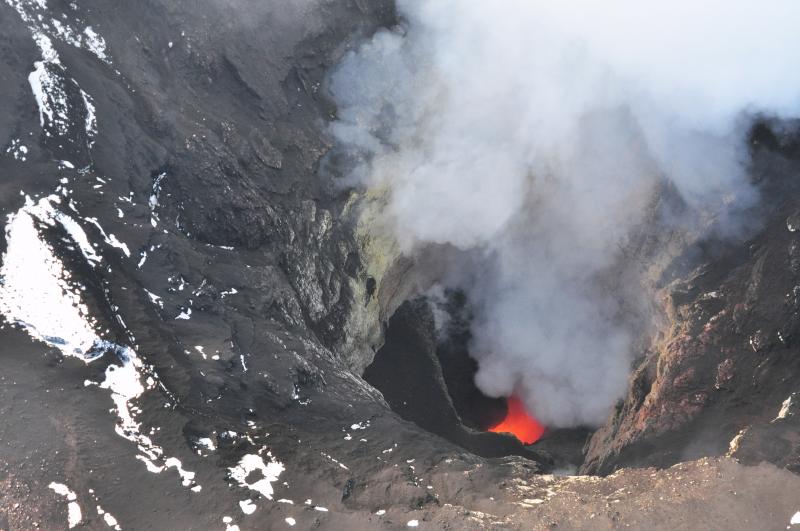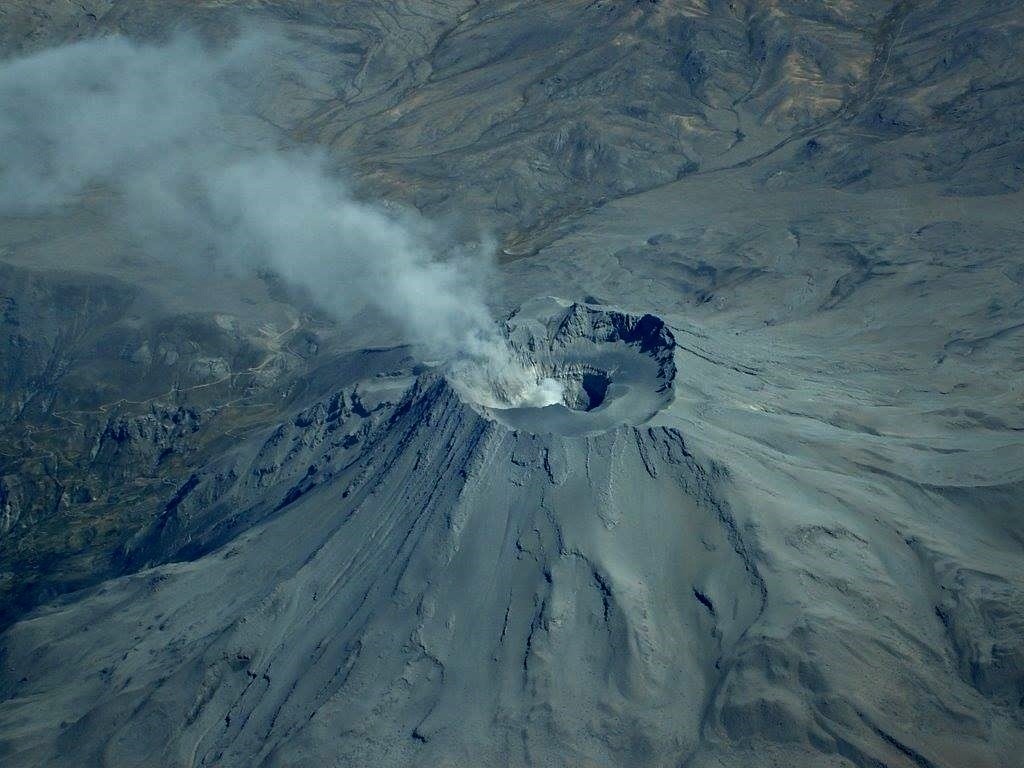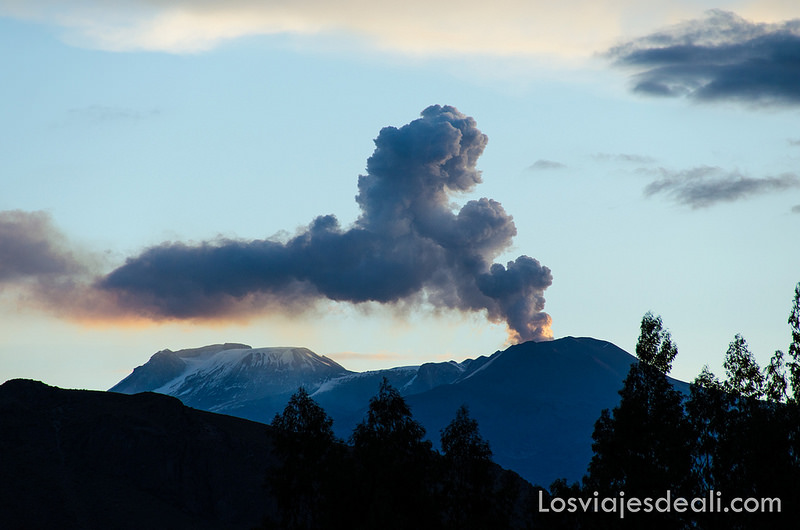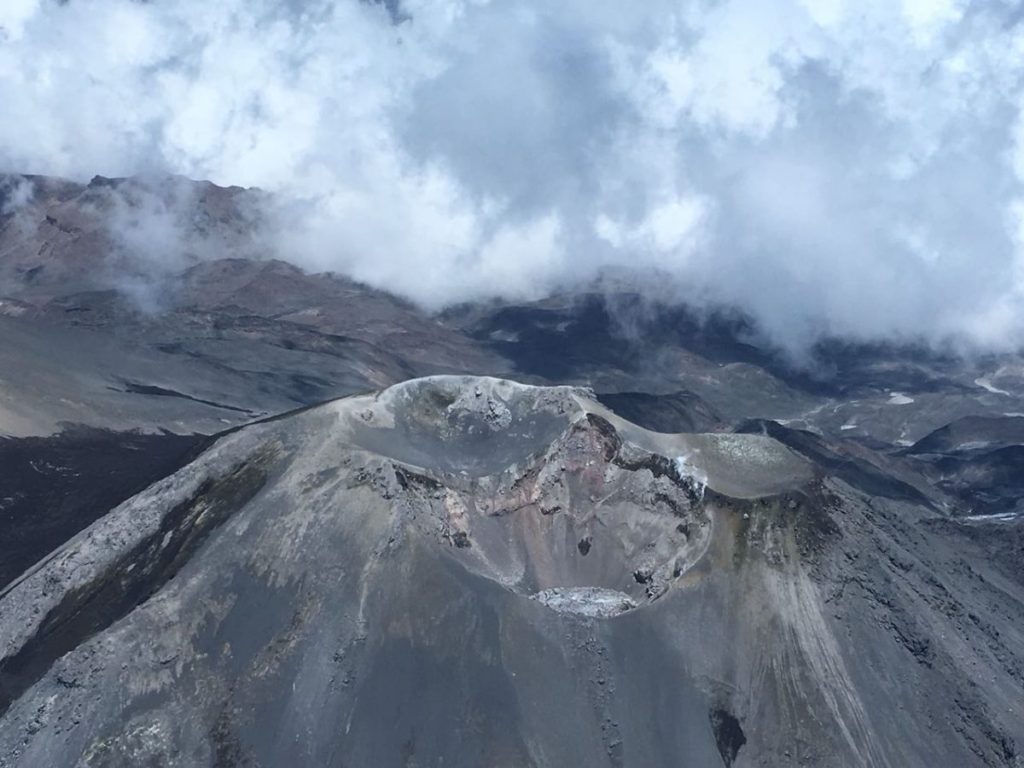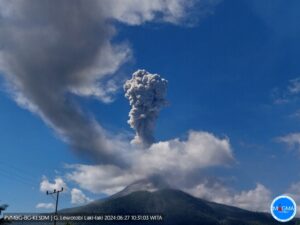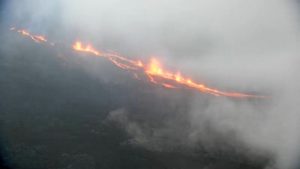November 26 , 2019.
Alaska , Shishaldin :
54°45’19 » N 163°58’16 » W,
Summit Elevation 9373 ft (2857 m)
Current Volcano Alert Level: WATCH
Current Aviation Color Code: ORANGE
Seismicity at Shishaldin Volcano has been climbing over the past day, and small explosions have been detected on local and regional infrasound stations. Strongly elevated surface temperatures have been observed in multiple images. Together these data indicate that low-level eruptive activity has resumed at Shishaldin. No ash plumes have been detected.
Shishaldin is monitored by local seismic and infrasound sensors, satellite data, web cameras, a telemetered geodetic network, and distant infrasound and lightning networks.
Source : AVO
Photo : Cirrus Read
Peru , Ubinas :
Period of analysis: 18-24 November 2019. Arequipa, November 25, 2019.
Current alert level: ORANGE
The Geophysical Institute of Peru (IGP) reports that the eruptive activity of the Ubinas volcano remains low. To date, the energy of earthquakes associated with the rise of magma at the surface has decreased. There are low and sporadic emissions of bluish gas (magmatic origin) and water vapor, observed by means of surveillance cameras. Under this scenario, volcanic explosions and / or ash emissions are unlikely to occur.
During the period 18 to 24 November, the IGP recorded and analyzed a total of 286 seismic events associated with the eruptive process of the Ubinas volcano, with a predominant seismicity of the volcano-tectonic (VT) type, related to the fracturing of rocks inside the volcano. On average, 31 events per day were recorded, all with magnitudes less than M1.9. The seismic signals related to the rise of the magma (hybrid type) have decreased both in number of events (8 earthquakes daily) and energy they generate. It should be noted that no volcanic explosion has been recorded since September 12th.
The surveillance cameras recorded light and sporadic emissions of blue (magmatic) gas and water vapor, with heights below 500 m above the volcano’s summit. The monitoring of the deformation of the volcanic structure, using GNSS data (processed with fast orbits), does not record anomalies. The MIROVA satellite monitoring also did not record a thermal anomaly on the volcano.
Source : IGP.
Photo : D.Libreros
Peru , Sabancaya :
Period of analysis: 18-24 November 2019. Arequipa, November 25, 2019.
Alert level: ORANGE
The Geophysical Institute of Peru (IGP) reports that the eruptive activity of the Sabancaya volcano has remained at moderate levels; that is, recording continuous moderate explosions and resulting ash emissions. Therefore, for the following days, no significant change in activity is expected.
Analysis of records obtained from the seismic network of Sabancaya volcano for the period 18 to 24 November 2019 has identified the occurrence of about 2131 volcanic earthquakes, the highest percentage of which is associated to the movements of magmatic fluids. During this period, there was an average of 47 explosions per day of moderate to low intensity.
The monitoring of the deformation of the volcanic structure, using GNSS data (processed with fast orbits), presents no significant anomalies. Visual surveillance, using surveillance cameras, identified the appearance of columns of gas and ash up to 2.3 km above the summit of the volcano, which were scattered to the western and southwestern sectors of Sabancaya. Satellite monitoring identified 7 volcanic anomalies on the volcano from 1 MW to 16 MW, associated with the presence of a lava dome in the crater of the volcano about 240 m in diameter.
Source : IGP.
Photo : Losviajesdeali.
Chile , Nevados of Chillan :
Special Volcanic Activity Report (REAV) Ñuble Region, Nevados de Chillán Volcanic Complex 26 November 2019, 02:40 Local time (Continental Chile).
The National Geological and Mining Service of Chile (Sernageomin) discloses the following PRELIMINARY information obtained from the monitoring equipment of the National Volcanic Monitoring Network (NVRN) processed and analyzed at the Volcanological Observatory of the Southern Andes ( OVDAS)
On Tuesday, November 26 at 02:22 local time (05h22 UTC), monitoring stations near Nevados de Chillán recorded an explosion associated with an LP seismic signal.
The characteristics of the LP earthquake are as follows:
TIME OF ORIGIN: 02:22 local time (05:22 UTC)
LATITUDE: 36,864 ° S
LONGITUDE: 71,380 ° W
DEPTH: 0.3 km
REDUCED TRAVEL: 530 cm2
ACOUSTIC SIGNAL: 26 Pascals (Pa) reduced to 1 km
OBSERVATIONS:
Volcanic technical alert is maintained at the YELLOW level
Sernageomin monitors online and informs in a timely manner of possible changes in volcanic activity.
Source : Sernageomin.
Photo : Sernageomin.
Indonesia , Anak Krakatau :
Level of activity level II (Waspada), since March 25, 2019. The Anak Krakatau (157 m altitude) has experienced an increase in its volcanic activity since June 18, 2018, which was followed by a eruption series from September 2018 to February 2019. The last eruption occurred on November 13, 2019, with a resultant eruption column height of 200 m from the bottom of the crater. The color of the eruption column was gray, thick.
The volcano is covered with fog. The CCTV camera observed a thin white smoke about 25-50 meters above the summit. The winds are weak to moderate, facing east. The temperature is about 23.8 to 31.6 ° C, the humidity is 83.00 to 93.00%.
The seismographs, on November 25, 2019, recorded:
6 low frequency earthquakes
Continuous tremor, amplitude 1-3 mm (dominant value 1 mm)
Recommendation: People / tourists are not allowed to approach the crater within 2 km.
VONA: The latest VONA ORANGE color code was released on November 13, 2019 at 6:32 pm, in connection with a CCTV observed eruption, with a thick, white / black eruption column rising to 207 m above sea level. sea or about 50 m above the summit. The eruption column was moving north.
Source : PVMBG.
Photo : Andrey Nikiforov / via Volcanodiscovery.
See the photos : https://www.volcanodiscovery.com/photos/krakatau/2019-nov/eruptions.html

